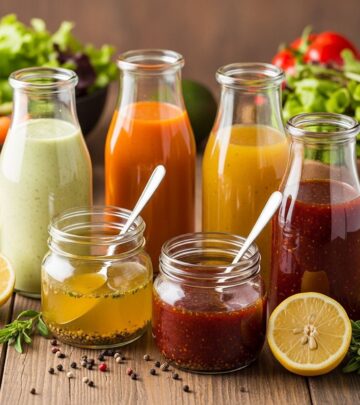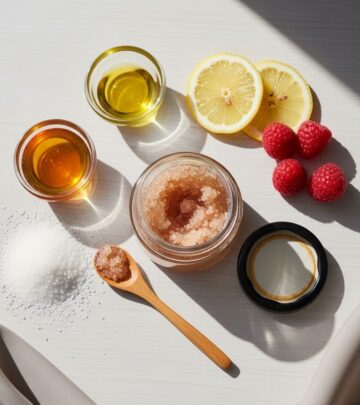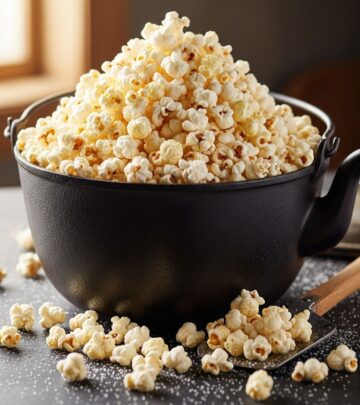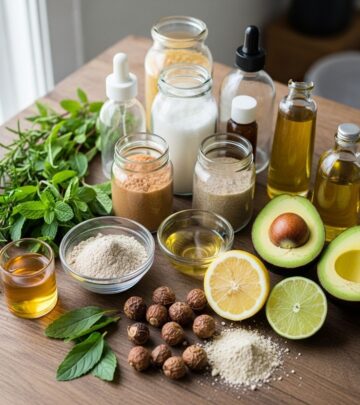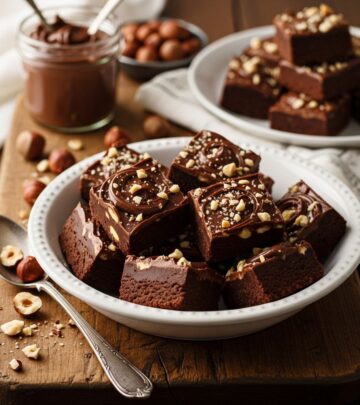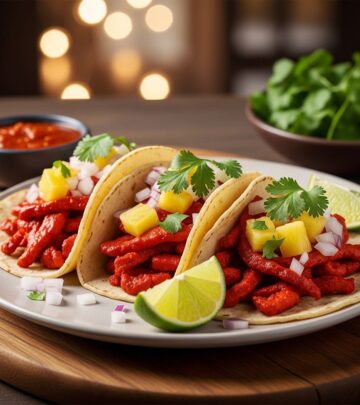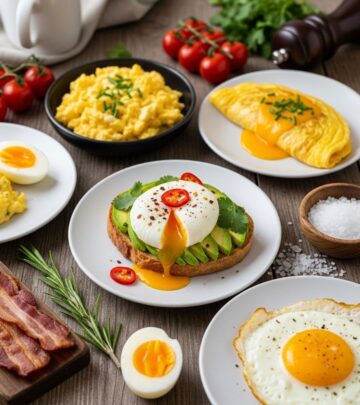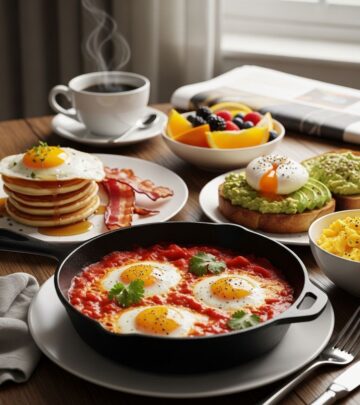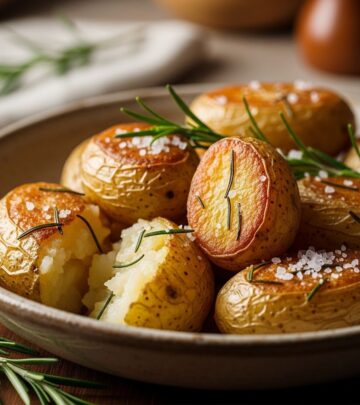The Ultimate Guide to Frying an Egg Perfectly Every Time
Unlock chef-level techniques for flawless skillet cooking at home.
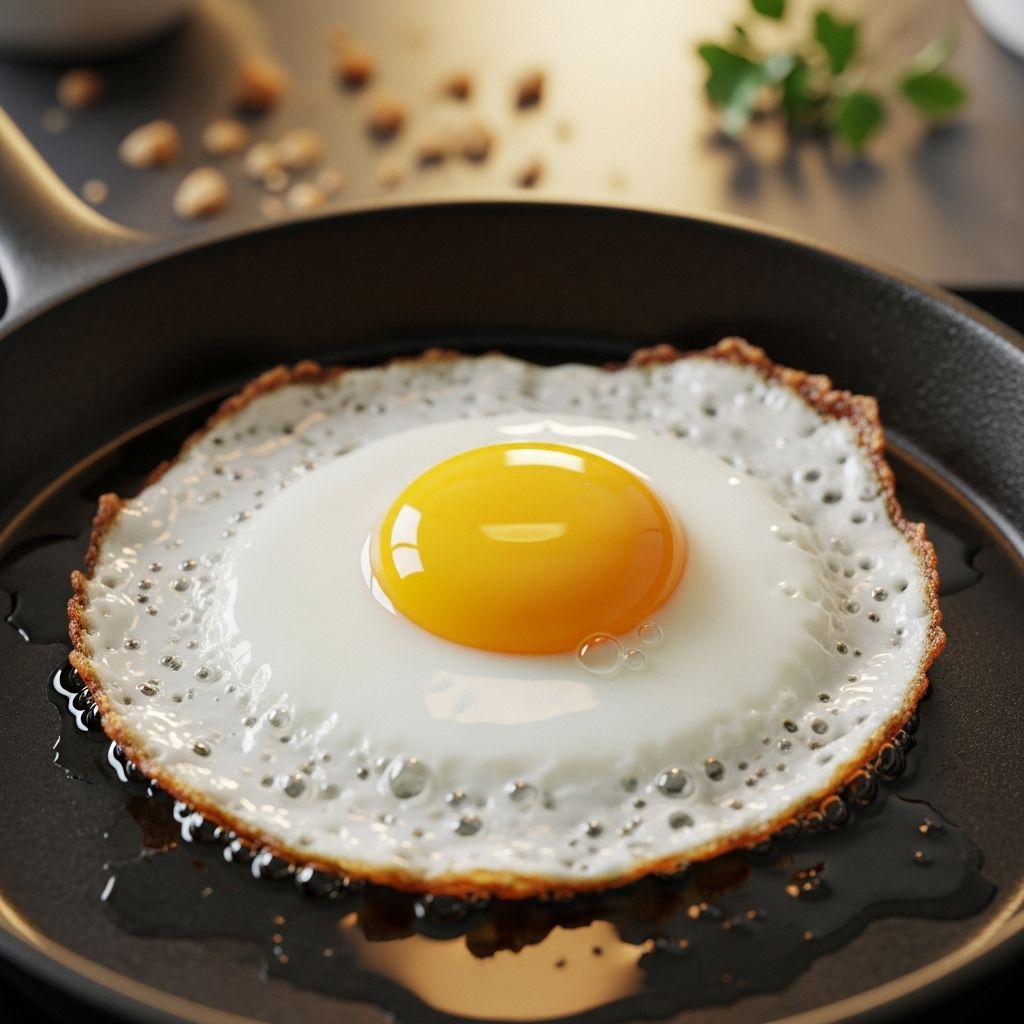
Image: HearthJunction Design Team
How to Fry an Egg: The Complete Guide for All Skill Levels
If you love eggs for breakfast, there’s nothing quite as satisfying as a perfectly fried egg—crispy at the edges, tender whites, and a golden, runny yolk (unless you prefer yours fully set!). Frying an egg may seem like a basic kitchen skill, but achieving ideal results every time takes a little know-how, precision, and patience. Whether you’re aiming for sunny-side up, over-easy, or over-hard, this guide will walk you through step-by-step instructions, pro chef tips, and answers to frequently asked questions, helping you master the art of the perfect fried egg.
Table of Contents
- Essential Ingredients & Tools
- Step-By-Step Instructions
- Types of Fried Eggs
- Chef Tips for Success
- Egg-Cooking Variations
- Common Mistakes & How to Avoid Them
- Serving Suggestions
- Frequently Asked Questions
Essential Ingredients & Tools
Before you get started, make sure you have the right ingredients and a couple of indispensable tools for best results:
- Eggs – Use the freshest eggs you can find. Fresh eggs hold their shape better in the pan.
- Butter or Oil – Unsalted butter is the traditional choice and yields a rich flavor, but neutral oils or olive oil work too.
- Nonstick Skillet or Well-Seasoned Cast-Iron – Prevents sticking and ensures even cooking.
- Spatula – A thin, flexible spatula is perfect for slipping under eggs and flipping them if needed.
- Small Bowl (optional) – For cracking your egg to check for shell fragments and to help guide it into the pan gently.
Step-By-Step Instructions
Follow these clear steps to fry an egg perfectly every time, whether you prefer your eggs sunny-side up or flipped.
- Warm the Pan & Melt the Butter:
Place a nonstick skillet over medium heat. Add 1 tsp butter (or oil). Allow the butter to melt completely until just foaming, but not browned (browned butter can alter the flavor). Swirl to coat the bottom evenly.
Want to ensure your egg yolk is runny every time? Check out our detailed guide to cooking eggs with a perfectly runny yolk. Unlock the secret to egg-cooking bliss in your kitchen. - Crack the Egg:
Crack the egg into a small bowl or ramekin, not directly over the pan. This extra step gives you a chance to remove any bits of shell and helps you pour the egg gently into the pan, reducing the chances of a broken yolk and creating a rounder fried egg.
Looking to elevate your breakfast? Master the art of sunny-side up eggs with our complete guide, offering pro tips that will help you achieve stunning results every time. - Pour the Egg In:
Once the butter has just started foaming, gently tip the egg into the center of the pan. (If making several eggs, add them one at a time, spacing them apart).
- Season:
Immediately sprinkle the egg with a little salt (and pepper, if you like).
- Adjust the Heat:
Lower the heat to medium-low to prevent the bottom from over-browning before the white is fully set. Cooking slowly yields the most tender results and ensures the yolk remains runny.
- Optional: Flatten the White:
If you want a perfectly even, flat fried egg, gently poke at the white with a fork, especially where the thicker part meets the thinner part. The goal is to get the white to spread out, cooking more evenly throughout. This step is optional but recommended for the most photogenic results!
If you prefer a fluffy texture, explore our techniques for making the perfect scrambled eggs. Discover the secrets to achieving light and airy eggs that melt in your mouth. - Monitor Cooking:
Cook until the whites are set but the yolk remains runny (for sunny-side up), about 2-3 minutes. For flipped eggs (over-easy, over-medium, over-hard), carefully slide a spatula under the egg and flip, then cook an additional 30 seconds to 2 minutes, depending on your desired yolk doneness.
Types of Fried Eggs
There are several classic fried egg preparations. Here’s a quick rundown:
| Type | White | Yolk | How to Prepare |
|---|---|---|---|
| Sunny-Side Up | Fully set, tender | Completely runny | Cook without flipping, 2–3 mins on medium-low heat |
| Over-Easy | Set, thinly golden at edges | Mostly runny, just glazed on surface | Flip egg, cook 30 sec–1 min more |
| Over-Medium | Set | Partially set, jammy | Flip egg, cook 1–1.5 mins more |
| Over-Hard | Firm | Fully cooked | Flip egg, cook 2 mins or until yolk is hard |
Chef Tips for Success
- Choose the Freshest Eggs: Fresher eggs yield tighter whites and vibrant yolks.
- Control Your Heat: Too high, and you risk tough whites and a burnt bottom. Too low, and eggs may cook unevenly.
- Skip Overcrowding: Cook one or two eggs at a time for even heat and easier flipping (if flipping).
- Let the Pan Do the Work: Resist the urge to fuss too much once the egg is in the pan. Minimal movement yields better texture.
- Season After Cooking for Crispier Whites: For maximum edge crisp, you can season after the egg is fried. Salt draws out moisture, so seasoning after can aid in crisping.
- Experiment with Fats: Butter gives classic flavor, but oils like olive or avocado can be great for higher-heat or heart-healthier preparations.
Egg-Cooking Variations & Pro Techniques
- How to Hard-Boil Eggs: Place eggs in a pot, cover with cold water. Bring to a boil, then turn off heat and cover. Let sit 9-12 minutes, then cool immediately in ice water. Peel and enjoy on-the-go breakfasts or chop onto salads.
- How to Make Scrambled Eggs: Beat eggs with a little salt and water. Melt butter in a pan over medium heat, then add eggs. Let them set for a few seconds, then gently stir with a spatula until just barely set and soft. Remove from heat—the eggs will keep cooking slightly from residual heat for perfect fluffiness.
- How to Poach Eggs: For eggs Benedict or bowls, heat water to a gentle simmer and add a splash of vinegar. Crack egg into a small bowl, gently slide into the water, and cook 3–4 minutes for set white and runny yolk. Remove with slotted spoon.
Common Mistakes & How to Avoid Them
- Breaking the Yolk: Reduce risk by cracking eggs into a separate bowl and gently sliding them into the pan.
- Too Hot Pan: Overly high heat toughens the whites and burns the edges before the yolk cooks. Always start with medium or medium-low heat.
- Under or Overcooking: Watch closely! Remove from the pan a little earlier rather than later; eggs continue cooking for a few seconds after coming off heat.
- Sticking: Using a nonstick pan or well-seasoned cast iron with enough fat almost always solves this problem.
- Skipping Pre-Seasoning: Seasoning the egg right after adding to the pan, while the surface is still raw, ensures better flavor than salting after the egg is fully cooked.
Serving Suggestions: Beyond Basics
- Serve on buttery toast for a classic breakfast.
- Top rice or grain bowls; especially good with soy sauce and scallions.
- Layer over avocado toast for a protein-packed snack.
- Make a breakfast sandwich with a fried egg, cheese, and bacon.
- Add to burgers for a decadent diner-style upgrade.
Frequently Asked Questions (FAQs)
What type of pan is best for frying eggs?
A nonstick skillet or a well-seasoned cast-iron pan is ideal. These pans allow for easy release, making flipping or sliding the egg out much simpler.
Can I use oil instead of butter?
Absolutely! While butter is the traditional (and flavorful) choice, olive oil, avocado oil, or even coconut oil also work great. Just make sure not to use too high a heat, especially with butter, as it can burn.
How do I make the yolk less runny?
Let the egg cook longer, or opt for over-medium or over-hard preparations. For a fully set yolk, cook the egg over-hard by flipping and letting it cook until the yolk is solid.
How do I get crispy edges?
Use a slightly higher heat and a bit more fat in the pan. The egg white will bubble up, creating that signature crispy edge, while the yolk remains soft if you keep a close watch.
Why do my eggs stick to the pan?
Sticking often happens if the pan isn’t hot enough, if there’s not enough fat, or if your pan isn’t nonstick. Make sure your butter is foaming, not just melted, before adding the egg.
Any hacks for frying multiple eggs at a time?
Use a larger pan and gently space out the eggs. For more evenly cooked whites, consider using egg rings or cook eggs in batches.
Can I reheat fried eggs?
Fried eggs are best enjoyed fresh. If you must reheat, gently warm in a nonstick pan over low heat. The whites can become rubbery if overcooked, so avoid the microwave if possible.
Bonus Pro Tips
- Try frying in bacon fat for extra flavor.
- Season with finishing salts, chili flakes, or fresh herbs after cooking.
- Add a splash of water and cover the pan for a softer, steamed white that covers the yolk (a classic diner trick!).
- For those who love intense flavor, try topping a hot fried egg with a sprinkle of grated cheese and a drizzle of hot sauce or sriracha.
Summary Table: Fried Egg Types & Doneness
| Style | Flip? | Yolk | Typical Cooking Time |
|---|---|---|---|
| Sunny-Side Up | No | Runny | 2-3 mins |
| Over-Easy | Yes | Slightly Runny | 2-3 mins + 30 sec flip |
| Over-Medium | Yes | Jammy | 2-3 mins + 1 min flip |
| Over-Hard | Yes | Set | 2-3 mins + 2-3 mins flip |
Ready to Fry?
Armed with simple chef techniques, patience, and a bit of experimentation, you’ll be frying perfect eggs every time—sunny, crispy, or fully set to your taste. Don’t be afraid to try different fats, toppings, and heat levels to find your signature fried egg style. Happy frying!
References
- https://www.delish.com/cooking/recipe-ideas/a23499380/how-to-fry-an-egg/
- https://www.delish.com/cooking/recipe-ideas/a62873120/air-fryer-deviled-eggs-recipe/
- https://www.delish.com/cooking/recipe-ideas/a64378020/how-to-make-perfect-scrambled-eggs/
- https://www.easyanddelish.com/cook-perfect-sunny-side-up-eggs/
- https://www.delish.com/cooking/g1920/egg-dinners/
Read full bio of medha deb

